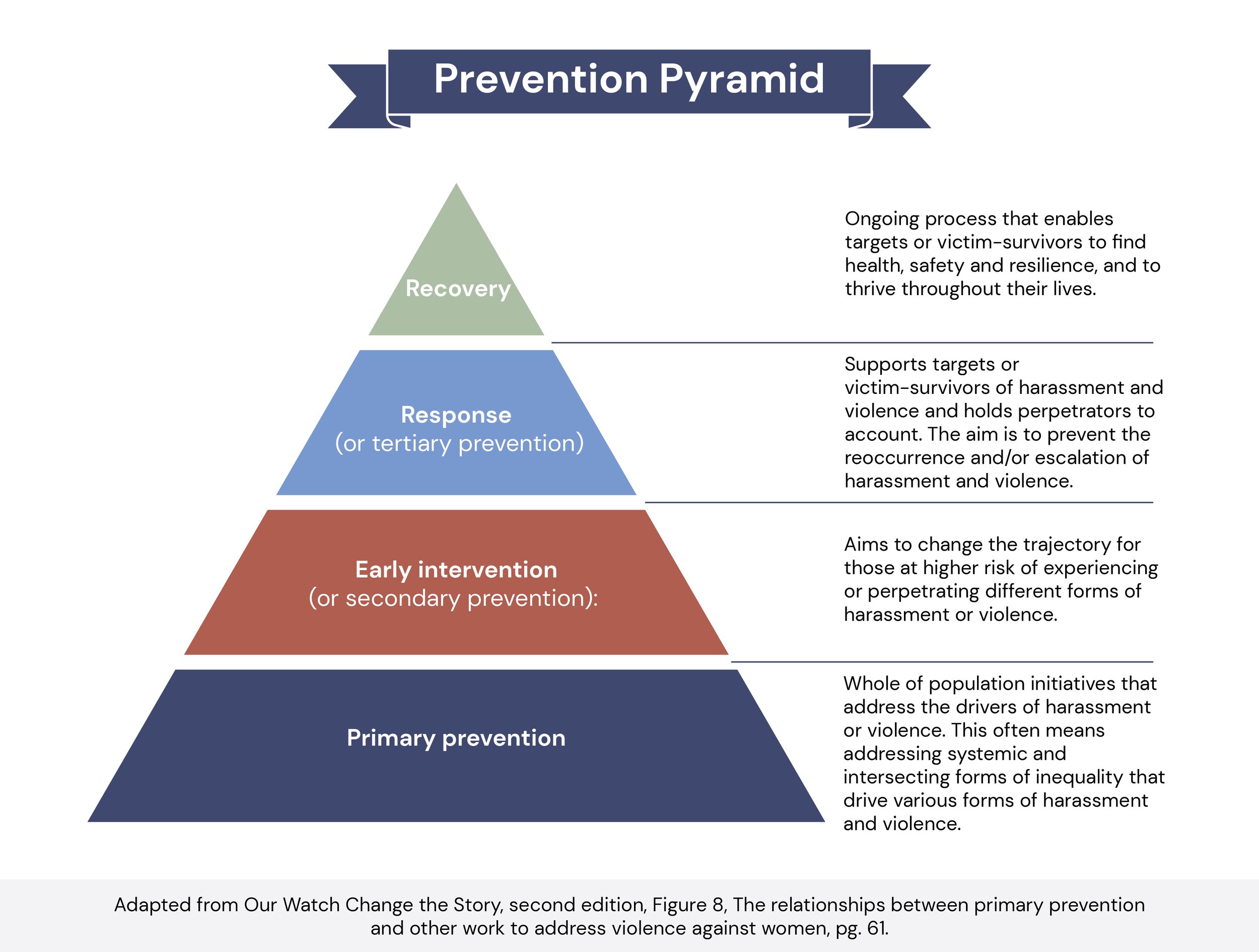The importance of investing in prevention: lessons from a global pandemic
Covid-19, while still with us, is something that, if mentioned, forces us to switch off, or ignore. The message is clear: we don’t want to hear about it or give it too much attention after the past three years.
But there are many important lessons about how Covid-19 came to be: global pandemics, just as the climate crisis, are preventable. There are a number of contributing and preventable factors that have led us to where we are now, and one of the key behaviours we need to address is moving beyond reaction, and engaging in prevention.
I want to switch focus now to the areas I work across. As an inclusion and justice consultant I work with organisations who are looking to address issues of bullying, harassment, and gendered violence. Often there is a broader commitment to diversity and inclusion, improving culture and staff wellbeing. However, most of the time I’m contacted when something has gone wrong. There are few organisations leading proactively and prioritising prevention.
When I work with a partner, I prefer to adopt a prevention-based approach that has been informed by public health approaches. The pyramid below provides an overview of the prevention approach and it’s important that workplaces consider all four levels and invest across the pyramid. We need all four forms of prevention to truly address the inequity that fuels harassment and discrimination, but also to provide the necessary support at the interpersonal level to allow people to thrive.
Much of the resource has been focused on response: that’s where socially we see investment in more police, more training for lawyers and magistrates, and increased funding (usually following a cut) into crisis support and services. It’s reactive and focuses on the event having occurred.
I’ve seen and worked with organisations who have managed to find discretionary funds to address one off incidents, such as staff payments, or an increase in counselling for a targeted area. Now these funds play a key role in unprecedented events, however, in patterns of behaviour like bullying, harassment of all forms, and sexual harm or misconduct, this is a reactionary approach. One that fails to address the systemic issues.
Now I understand that prevention isn’t as sexy as a response work, it is conducive to the need to meet KPIs, but it is a necessary ingredient to things that enhance ‘workplace performance’ ‘student experience’ ‘shaping our values and culture’ ‘productivity’, and lastly ‘attrition and turnover’.
In the age of both quiet and loud quitting, the wave of resignations and the workers market that has emerged, is an opportunity for organisations to radically rethink and act to engage in the long term.
Now for the business case – look in the past 10-15 years of discretionary or reactive spending across an organisation. How many incidents have you needed to put out fires? How much has your organisation spent on external reviews, audits and new tech systems that don’t often align with what’s in place already? How much have you spent on recruitment, and time that’s been lost between appointments? What talent have you lost because staff are burnt out, feel bullied or harassed?
Now calculate the cost of prevention-based interventions in your organisation.
If this is purely a financial motivation, then the maths is in; prevention is cheaper and reactive measures. It’s harder, of course, but it’s more meaningful to employees and to students, to demonstrate that you value them, you value their safety, and you want to nurture their future in your organisation. And it’s more sustainable. Too often reactive measures do not align with existing strategy or work. Or it’s led by separate consultants, rather than in partnership with teams and divisions across an organisation.
The last thing to mention is that it can be measured. Evaluation is a key component to all forms of prevention from recovery and response to early intervention and primary. It is possible to evaluate the impact of these interventions both individually and within a broader organisational strategy.
If you want to learn more about designing a prevention-based, whole of organisational strategy to advance equity and inclusion, and combat disrespect and poor culture, then get in touch with me today.

